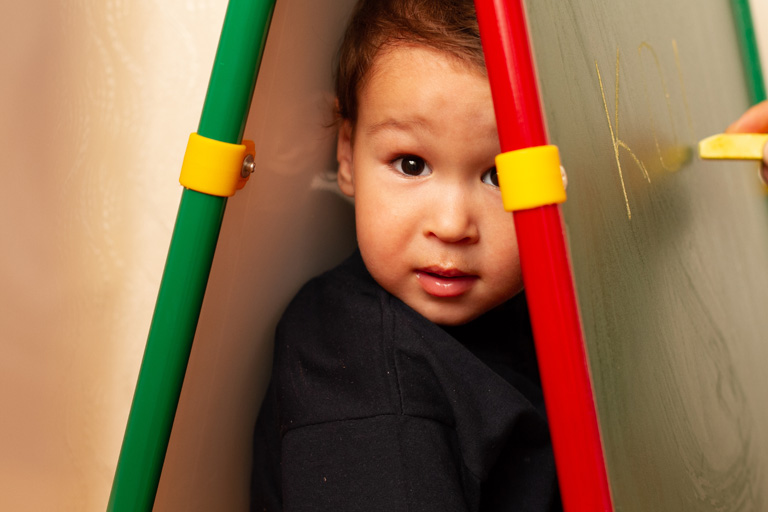Caring For Your Baby with Cerebral Palsy
April 26, 20165 Things to Say To Your Toddler Instead of “NO!”
June 2, 2016By Dave Hammer, MA CCC-SLP
Director of Professional Development and Speech Services
Childhood Apraxia of Speech Association of North America
What are the most important things to ask a therapist when trying to understand what is happening in therapy?
If we are truly diagnosing CAS correctly, most therapists do not get a chance to see many children on their caseload with this challenging speech disorder. Even with limited experience with this disorder, what is important is that the therapist convey to the parents how they are ensuring a speech sound and sound sequencing approach to therapy and are not just focused on language stimulation and parent training if CAS is suspected. Goals should be clearly outlined so that when a parent observes the speech session, it is as clear as possible what the targeted goals are at the time. While the therapy often looks like the therapist is “just playing” with the child, there are embedded speech goals that need to stand out and understood. The therapist should be able to articulate those goals in a way that parents understand so that follow-through with home practice strategies is successful.

What should be done in home practice?
This can vary greatly depending upon at what level the child is with respect to vocal/verbal output. Some children require focus on building foundational skills such as joint attention and willingness to imitate before expressive speech and language can be expected. Goals to support this foundational skill building are important to pass on to the parent for situations in the home environment that lend themselves to this. These generally are those one-on-one times with the child such as bath time, bed time, meal time, and car riding time when auditory and visual distractions are reduced to a degree. When sound and sound sequencing goals are targeted, parents can play an integral role in supporting “having fun” with sound play and ensuring attempts at the sounds for communication purposes. If supportive communication systems such as sign language are introduced, parents can be a key partner in helping to expand the child’s sign language repertoire while ensuring that a vocalization of some sort always accompanies the sign usage.
How can I juggle all the demands of parenting and still have time for supporting therapy?

There is no easy answer to this question as parenting alone has its many challenges and emotional consequences. First, acknowledge that this will be a journey not a race so that things can be taken one step at a time. Throughout the course of therapy, let the therapist know when you are feeling overwhelmed so that potential adjustments can be made in what is expected for home carryover practice. Make sure you attend to your other children, spouse, partner, etc and try not to turn your whole life into one big therapy session that leads to others feeling left out. This can so easily happen and I have unfortunately seen it many times over the years. If the therapist limits the goals for home carryover to a few per week, it should feel less overwhelming. Reading to the child is vital as well as providing play and language stimulation throughout the day even when the child does not “give back” vocally/verbally. Lastly, try to find support from other parents who are going through or who have gone through this journey. The website www.apraxia-kids.org has excellent resources and supports for parents/caregivers.
It is so critical to intervene as early as possible when speech-motor issues are suspected. The Early Intervention therapist is in a unique position to begin the journey of a speech sound/sound sequencing approach to ensure that foundational skills are in place for a strong speech-motor planning system, and before bad habits are formed. We ARE getting better at diagnosing suspected CAS at younger ages with research currently underway that will help us better pull out those differential early features that persist into the preschool years when the CAS diagnosis can be more firmly established or ruled out. Until then, we are left with clinical judgements and instincts to guide us and the families we serve to provide the opportunity for every child to “find their voice, and hopefully one of their very own” (Childhood Apraxia of Speech Association of North America).
Click here to read Part One and Part Two of this series on Childhood Apraxia of Speech (CAS).

 Send to a friend!
Send to a friend!


